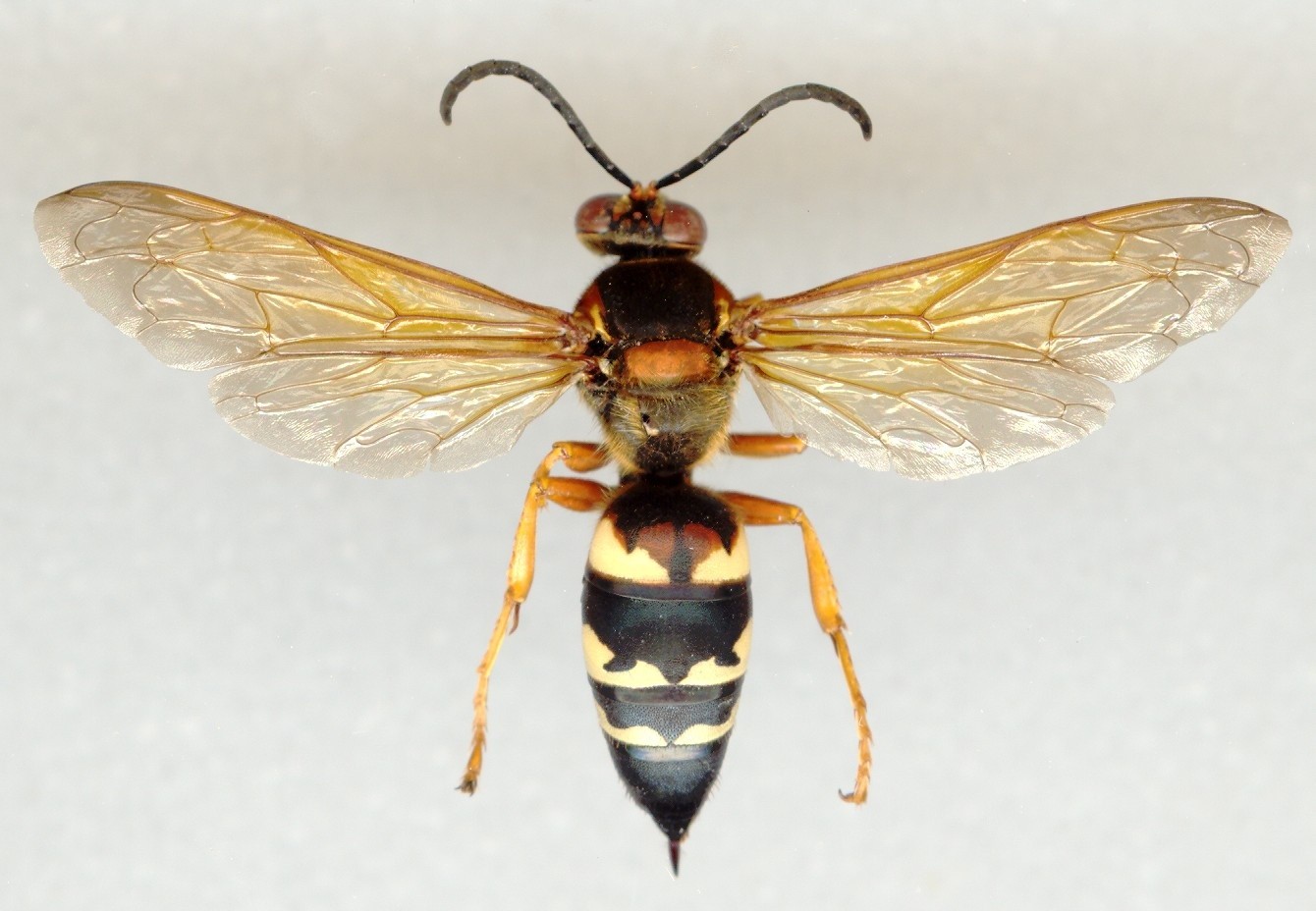Adaptation
Over a long period of time, organisms,
including the cicada killer wasp (Sphecius speciosus),
have managed to better adapt to their environment.
When looking at a common ancestor of the cicada killer,
as well as other similar, extant organisms within the order
Hymenoptera, one difference in regards to form and function may
be made apparent. Where as the previously
mentioned organisms have a set of setae
on the back of their hind legs in order to brush off dirt
particles, the cicada killer (Sphecius speciosus) has
what are called, “spurs,” at the same exact position (Coelho and
Holliday, 2008). These spurs are not used,
however, to remove soil from the body, rather they are used as a
tool for excavating nests (Coelho et al., 2008).
As referred to in the section, Habitat,
cicada killers use their mouth to dislodge soil when creating a
nest. Additionally, in order to shovel out excess
soil, the cicada killer backs out of the forming nest, pushing away
mounds of debris with their hind legs. Is it a
coincidence that Specious speciosus are one of the few
organisms to possess these spurs given their distinguished digging
technique? The answer is no.
Cicada killers have adopted this beneficial trait as a result
of Natural Selection (Coelho and Holliday, 2008).
With these larger spurs, cicada killers are able to dig much more
efficiently than if they possessed ancestral setae.
One aspect that comes into discussion, though,
regarding spurs is the idea of sexual dimorphism.
Since males do not dig the nests, they have much less of a need for
the spurs, themselves. As a result, the females
have much larger spurs than do the males.
Additionally, females are also larger in overall size than males.
There is support for the hypothesis that due to their demand
for both hunting and transporting cicadas back to the nest, females
have increased in size over time (Coelho et al., 2008).
Together, these two examples of sexual dimorphism present
biologists and others with observable adaptations that can be easily
understood.
Likewise, another observable adaptation of the
cicada killer surrounds its very name. To
explain, cicada killers have positioned the timing of their life
cycle to coincide with that of their prey’s (Lafayette College,
2012). As a result, this simple adaptation
increases the survival rate of cicada killers due to the available
amount of food.
Sphecius speciosus have also been able
to decrease their energy exertion by conveniently adapting an
alternative food source. In order to provide food
for their young, cicada killers search for their prey, cicadas, that
primarily reside in trees. Once the cicadas are
found and brought back to the nest, the predatory cicada killer will
return to the same tree in which their prey was found in order to
feed on its food source: sap. Cicadas bore holes
in trees to contract the sap within. Thus, when
killed, cicada killers utilize these holes as a valuable source of
food. Ultimately, without the assistance from
cicadas, the sap would not be available (Australian Museum, 2009).
Finally, cicada killers have adapted the ability to alter their body
temperature. It has been discovered that in order to increase
body temperature, cicada killers physically vibrate their wings.
This method heats up the muscles of cicada killers so that they can
be agile in flight. Additionally,
As with any other organism, cicada killers have many more
adaptations that they exhibit. However, the ones mentioned
above are either those that are specific or critical to the survival
of the organism at hand.
